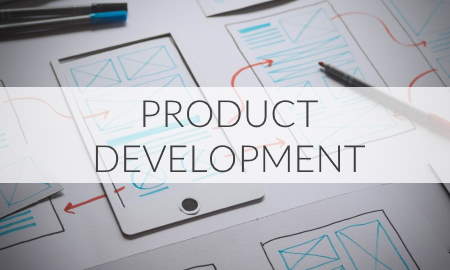

Learn the key elements of a business, and identify the skills and methodology needed to build your dream company.

Learn about the Agile product development process and identify next steps to build your product.

Create a plan and work towards specific goals leveraging our expert guidance and support
Personas are fictional, generalized representations of similar target audience members. They represent a market segment but unlike the latter that describes general attributes, the persona emphasizes how the person relates to the product. They are used to personify an audience group and make it easier to empathize with them, understand their needs/desires, and propose the right solution for them.
Personas are created based on demographic information about the target customers. The information can be collected through research to identify shared values, goals, and behaviors. As direct representatives of a customer group, personas can help companies align with the goals of that group. The company then uses this information to identify how they can target that specific group of customers and what will resonate with them.
There are different types of Personas depending on what purpose they are created for.
This group of personas is used when persona-based research is not possible, whether due to time and money constraints, or for other practical reasons. In such cases, the team creating the persona utilizes secondary research and any other available information to come up with the personas' profiles. This approach can be effective in driving initial product design decisions but market validation remains important. For that reason, it is recommended to revisit and refine the Personas once related information is collected from the market.
When defining this group of personas, the focus is on users' current behavior, goals, and pain points. The profiles of design personas are based on field research and they describe why the customers do what they do. They can be used to make product decision for that customer segment. Using design personas ensures that everyone involved in designing and building the product understands the target market and considers them throughout the product development process. This group of personas is effective in communicating research insights, defining a product, and understanding the type of users to focus on.
When defining this group of personas, the focus is on demographic information, shopping behaviors, buying motivations and concerns, media habits, and marketing messages. Typically, marketing personas are described as a range and explain the customer's behavior. For instance, 20-35 years old males, living in the US and Canada. Given the precise description of the customer, marketing personas are effective in determining the kind of customers who will be receptive to certain messages or products, and assessing the potential ROI of a product. However, they are not effective in defining a product or service in terms of how it works, its use, or features that need priority.
Personas are ideally created based on real data from market research. First the data is collected, then the (market) segments are identified based on the data, and lastly the personas are created to match the segments.
An important consideration when creating personas is the distinction between the user and the customer. While the user (or beneficiary) is the person who enjoys the benefits of a product, the customer is the one who pays for it. Depending on the product and its usage, the two may be the same or different persons. In the latter case, it is essential to conduct product positioning and market analysis for both the user and the customer, and to create personas for both.
For instance, a children's book, has two personas: the children who read the book and the parents who buy it. The former is the beneficiary of the book and the latter is the customer. This means that you need two different personas and two corresponding product strategies. For the beneficiary (child reader), you may consider eye-catching cover, attractive images, and illustrations throughout the book. On the other hand, the customer (parent) will be interested in the values and lessons contained in the book.
Emerging Humanity's design persona template is simple and concise, focusing on the important elements of the relationship between the target customer and the product. It is available for free under a Creative Commons license.
Creating a persona includes a good amount of research and some intuition. Fortunately, there are some useful guidelines.
Personas represent the voice of the user. As such, they play a critical role in Emerging Humanity's product design and development process. Failure to consider the typical activities and environment of the persona may result in creating an incomplete or disjointed product experience.
In the design process and in addition to personas, it is important to use scenarios to provide context and prioritize requirements. A good scenario will demonstrate potential uses of the product based on the goals and needs of the persona. This elaborates the relationship between the Persona and the product, and helps to overcome possible shortcomings in the design process.
When connecting the product to the end user, it is important to consider at least two scenarios to ensure optimal customer experience across different use cases. This approach allows product designers to validate design decisions, identify areas that require further work, prioritize product features, and create overall better products!
We Help Visionary Tech Entrepreneurs Build Impactful Companies!